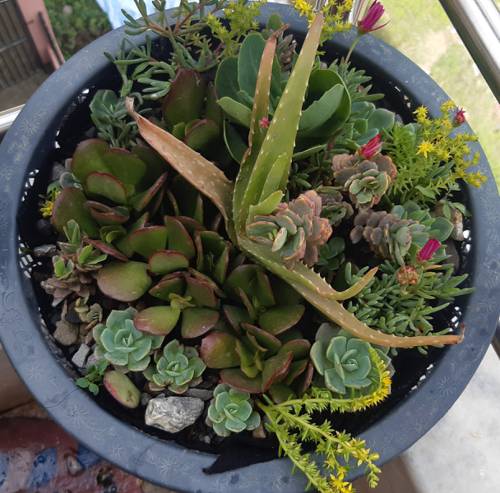
FAQ About Indoor Plant Lighting Temperature

What is lighting temperature in indoor plant care?
In indoor plant care, lighting temperature refers to the color temperature of the light, measured in Kelvin (K), that is emitted by artificial light sources. Color temperature affects how the light appears, ranging from warm to cool tones. It is crucial for providing the right type of light that supports photosynthesis and plant growth.

How does lighting temperature affect plant growth?
Lighting temperature affects plant growth by influencing photosynthesis and other growth processes. Warm light (around 2700K-3500K) often promotes flowering and fruiting, while cooler light (5000K-6500K) tends to promote vegetative and leafy growth. The right balance allows plants to thrive indoors by mimicking natural sunlight.

What is the best lighting temperature for growing leafy greens indoors?
For growing leafy greens indoors, a cooler lighting temperature around 5000K to 6500K is ideal as it closely resembles daylight, which promotes healthy vegetative growth and mimics the conditions these plants would naturally experience outdoors.

Can I use regular household bulbs for indoor plant lighting?
While regular household bulbs can provide some light, they are often not sufficient for optimal plant growth. Incandescent bulbs, for instance, emit more heat than light, which can harm plants. It is better to use bulbs that are specifically designed for plant growth, such as LED grow lights that provide the appropriate spectrum and temperature.

What lighting temperature is best for flowering plants indoors?
Flowering plants typically benefit from warmer lighting temperatures, around 2700K to 3500K, as this spectrum tends to encourage blooming and reproductive growth phases.

Why do different plants need different lighting temperatures?
Different plants have evolved under varying natural conditions and thus have different light spectrum needs. Some plants are adapted to thrive under the full sun and cool light, while others grow best under the dappled light of a forest understory, benefiting from warmer light. Understanding a plant's natural habitat helps in choosing the appropriate indoor lighting temperature.

What happens if the lighting temperature is too high or too low for a plant?
If the lighting temperature is not suitable, plants may show signs of stress such as yellowing of leaves or stunted growth. Too much warm light can lead to excessively rapid blooms with insufficient vegetative growth, while too cool light might inhibit flowering and cause plants to become leggy.

How can I measure the lighting temperature of my indoor lights?
Lighting temperature is often indicated on the packaging of bulbs and light fixtures. If it is not, you can use a light meter or spectrometer to measure the spectrum of the light being emitted. Some advanced tools and apps are also available that can assess light temperature through smartphone cameras.

Is it possible to use LED lights for indoor plant lighting?
Yes, LED lights are popular for indoor plant lighting due to their energy efficiency, low heat output, and the ability to provide precise lighting temperatures and spectrums that can be tailored to different plant needs. Many LED grow lights are designed specifically for horticultural purposes.

What role does natural sunlight play in determining the required lighting temperature?
Natural sunlight provides a full spectrum ranging from warm to cool, which varies throughout the day. When artificial lighting is used to supplement or replace sunlight, it is important to choose a lighting temperature that complements what the plant would naturally receive, supporting its natural growth cycle.

Can plants adapt to lighting temperature changes indoors?
While some plants have the ability to adapt to gradual changes in lighting temperature, abrupt shifts can cause stress and negatively impact growth. Adaptation processes include changes in growth rate and leaf morphology, but maintaining consistent and appropriate lighting is generally best for plant health.

Are there specific light fixtures recommended for different lighting temperatures?
Yes, various light fixtures, such as fluorescent, LED, and HID lights, are optimized for different lighting temperatures. For instance, LED grow lights are often adjustable, allowing you to set the desired Kelvin value, whereas fluorescent tubes may be categorized by temperature ratings like "cool white" or "warm white." It is important to match your plant's needs with the appropriate fixture.

What are the signs that a plant is not receiving the correct lighting temperature?
Signs that a plant is not receiving the correct lighting temperature include leaf discoloration (yellowing or browning), leggy growth, leaf drop, and failure to bloom or fruit. Identifying and adjusting the lighting can help remedy these issues.

How often should I adjust the lighting temperature for indoor plants?
Adjusting the lighting temperature for indoor plants should be based on seasonal changes, the plant’s specific growth stage, or when switching between different types of plants. Many modern grow lights offer features to easily adjust the temperature, allowing for seamless transitions according to plant needs.

Can incorrect lighting temperature attract pests to indoor plants?
While incorrect lighting temperature itself does not directly attract pests, stressed plants due to improper lighting are more susceptible to pest infestations. Maintaining optimal lighting conditions helps strengthen the plants' natural defenses against pests and diseases.

What is the difference between warm white and cool white lighting for plants?
Warm white lighting, typically around 2700K-3500K, appears more yellow and is used to promote flowering and fruiting, whereas cool white lighting, around 5000K-6500K, appears bluish and supports vegetative growth. Both are crucial for different growth phases of plants.

What impact does lighting temperature have on photosynthesis?
Lighting temperature influences the efficiency of photosynthesis by affecting the absorption spectrum of chlorophyll. Optimal spectrums enhance photosynthetic processes, ensuring efficient energy conversion and supporting growth and biomass production.

Do succulents require specific lighting temperatures indoors?
Succulents generally prefer bright, cool lighting similar to their native arid environments. A lighting temperature around 4000K to 5000K mimics sunlight that supports their need for energy-rich light, aiding in maintaining their shape and vitality without the risk of overheating.

What should I consider when buying grow lights for indoor plants focusing on lighting temperature?
When buying grow lights, consider the Kelvin rating to ensure it matches your plant’s requirements, the light spectrum it provides, energy efficiency, and whether it has adjustable settings to vary the lighting temperature according to different growth stages of the plant.

How does lighting temperature relate to the intensity of light exposure for plants?
While lighting temperature refers to the spectrum or color of light, intensity is about how bright the light is. Both are important for plants; a balance ensures that plants receive not just the right spectrum but also enough light energy to perform photosynthesis effectively. Tailoring both aspects according to plant needs can significantly enhance growth and development.
